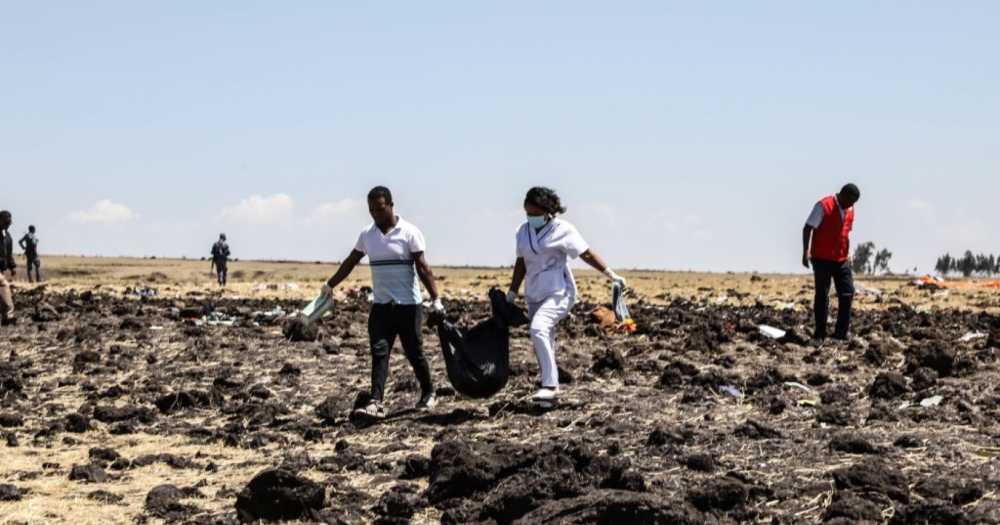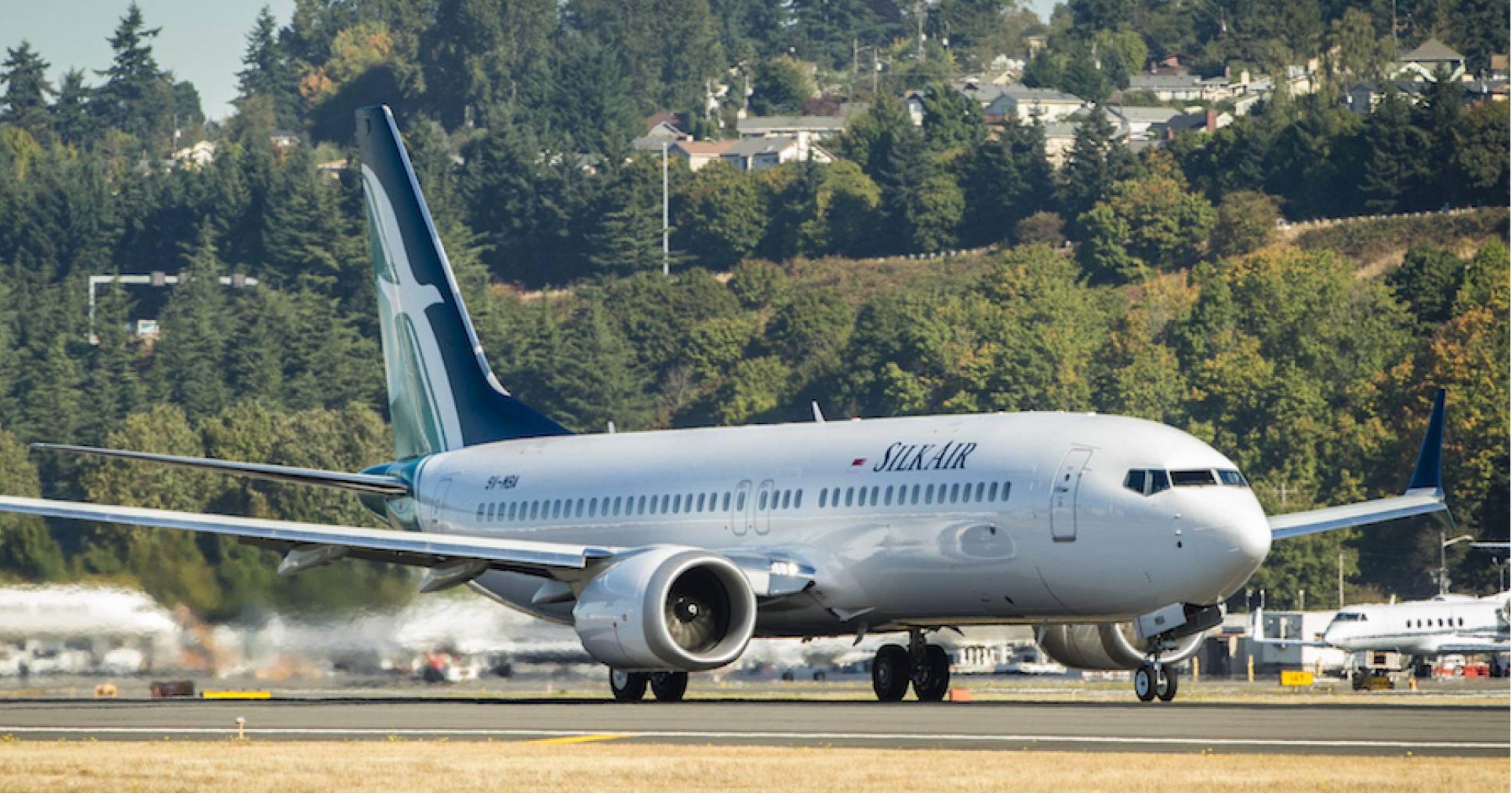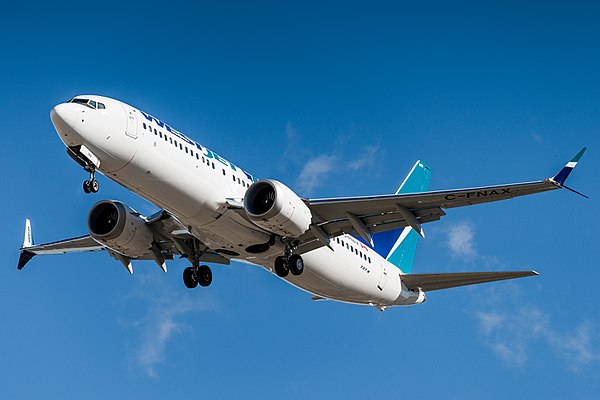The Boeing 737 Max 8 is part of a fourth generation of Boeing 737 planes that also includes the Max 7, 9, and 10.
Boeing said it would be fuel-efficient, safe, and handle similarly enough to its previous models so that the pilots would not have to undergo re-training.
It hasn't worked out quite so well so far, but we'll get to that later.
Here is the 737 Max 8.
The new 737 Max received quite the hype when it was first launched in 2011, quickly becoming the fastest selling plane in Boeing's history.
In fact, in January this year, Boeing was sitting on more than 5,100 orders for the 737 Max line.
A few of those orders came from Singapore too.
The 737 Max 8 first came to Singapore's shores in October 2017, when SilkAir officially inducted them into their fleet.
They would go on to add five more 737 Max 8 into its fleet.
But as we now know, on March 12, 2pm, all six of the Max 8 from SilkAir's fleet were grounded.
So what went wrong?
The tale of souring public opinion and general mistrust towards the 737 Max 8 begins with the Indonesian Lion Air tragedy late last year that killed all 189 people on board.
Angle of attack
On the morning of October 29, 2018, Lion Air flight JT610 crashed shortly after its take-off from Jakarta.
Preliminary reports, while inconclusive, highlighted certain aspects of the flight prior to the crash.
The plane's Maneuvering Characteristics Augmentation System (MCAS), which is an automatic anti-stalling system, had pushed the nose of the plane down for about 10 seconds, which the pilot righted by manually pointing the plane's nose up.
About three minutes later, the same thing happened again. While the pilots once again righted the plane, the issue happened more than 20 times until communications were cut off.
An issue regarding the jet's angle of attack (AOA) sensor was also brought up.
If the AOA sensors detect that the plane is pitching too high, the MCAS automatically adjusts its tail to level out the plane.
However, according to a Boeing service bulletin, if the AOA sensors are feeding faulty data to the MCAS, the system could force the plane into a dive.
Lion Air flight JT610's AOA had registered incorrect airspeed readings on four flights prior to the crash, and they had replaced the AOA just a day before the crash.
Changes in weight
One of the more notable changes from previous iterations of the Boeing 737 was how the Max 8 fitted a much larger, more fuel-efficient engine under the wing of the jet.
Which allowed the Max 8 to run on 14 to 20 per cent less fuel than previous iterations.
This additional weight on the wings, however, led to the plane's nose having a tendency to nudge upwards.
Enter the MCAS.
The MCAS was designed to be activated automatically, without pilot input, and its sole function, apparently, was to counter the plane's aforementioned tendency to nudge upwards.
But as also mentioned above, if the AOA feeds faulty information to the MCAS, it can very well push the plane into a dive.
It is of course not certain if this was the reason why the Lion Air plane crashed, much less the reason for the more recent Ethiopian Airlines crash that killed all 157 people on board.
In fact, Ethiopian Airlines just sent their Black Boxes abroad for analysis, so it's going to be a while before we get a clearer idea as to why and how the plane crashed.
 Photo via MICHAEL TEWELDE/AFP/Getty Images.
Photo via MICHAEL TEWELDE/AFP/Getty Images.
However, both the Ethiopian Airlines plane and the Lion Air plane were new planes of the same model.
Satellite tracking data suggested also that the pilots on both flights were struggling to control the plane.
And both went down shortly after take-off (13 minutes for Lion Air, and just six minutes for Ethiopian Airlines).
The fallout
There's a long list of countries that have doled out varying degrees of groundings for the Boeing 737 Max 8.
These countries include Singapore, Malaysia, Indonesia, Australia, China, India, United Kingdom, the entire European Union (that's 28 countries), Oman, South Korea and Mongolia.
Some have chosen to ground any 737 Max 8 they might have (like Mongolia), while others (like us) went as far as to suspend operations of all variants of the Boeing 737 Max aircraft flying in and out of the country.
And that's not counting all the airlines that have grounded the plane as well.
One notable country that resisted grounding the plane for a while, interestingly enough, is the very place Boeing originated from.
But even the U.S. despite earlier claims from the U.S. Federal Aviation Administration that “thus far, our review shows no systemic performance issues and provides no basis to order ground the aircraft,”, buckled and grounded the plane.
This could have been partially due to pilots in the U.S. who have lodged complaints of problems controlling the Boeing 737 Max 8 during flight no less than five times.
One of the incidents highlighted involved an aircraft that "pitched nose down" during take-off — the situation was only remedied after autopilot was switched off.
In the wake of the Lion Air crash, Boeing had stated that "the 737 Max is as safe as any airplane that has ever flown in the skies". After the Ethiopian Airlines crash, it once again reiterated they had "confidence in the safety" of the 737 Max 8.
Perhaps one thing we can take solace in is the fact that Boeing may refuse to admit that there are flaws with its 737 fleet, but this hasn't stopped the FAA from ordering Boeing to upgrade the safety software on its 737 Max 8's by April.
And yes, one of the updates will be to the MCAS.
Related articles:
Top image from Boeing (Via Ainonline)
If you like what you read, follow us on Facebook, Instagram, Twitter and Telegram to get the latest updates.

